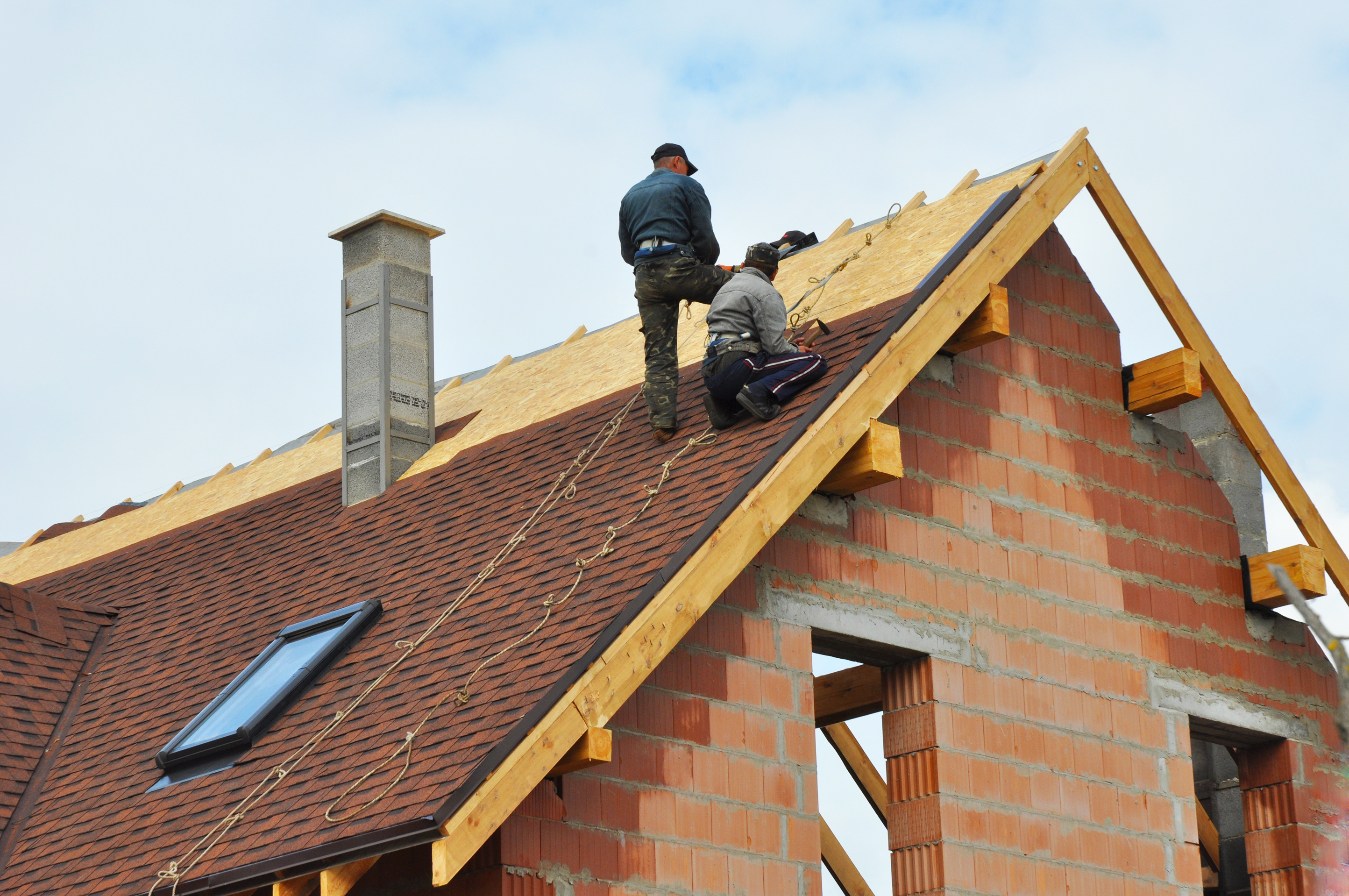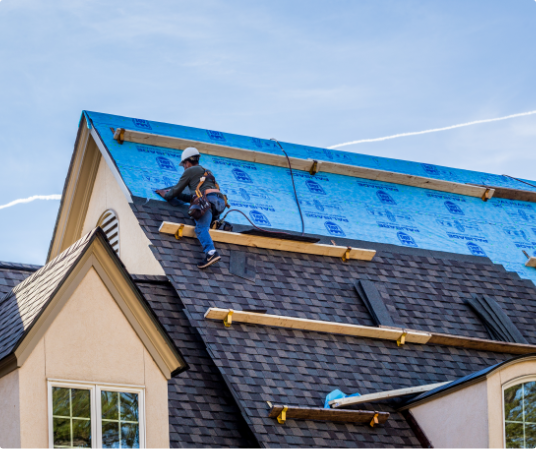Vital Inquiries to Ask Gainesville Roofing Companies Before Working With
Wiki Article
Best Practices for Ensuring Correct Roof Covering Ventilation
Making sure proper roof air flow is important for the longevity and effectiveness of a roof covering system. A well balanced intake and exhaust vent ratio, frequently 1:300, plays an essential role, with intake vents preferably put at the reduced edge of the roof for trendy air entry and exhaust vents at the top for cozy air exit. Regular assessments to identify blockages and maintain clear air movement are vital. Maintaining insulation away from vents is essential to prevent air movement limitation. Comprehending these foundational aspects sets the phase for even more comprehensive insights right into installation and upkeep techniques that can significantly enhance your roofing system's efficiency.Understand Ventilation Fundamentals
Properly recognizing ventilation basics is important for making certain the longevity and performance of roof systems. Effective air flow minimizes moisture accumulation and temperature extremes in the attic room, both of which can bring about considerable architectural damage with time. A well-ventilated roofing system helps in avoiding typical issues such as mold and mildew growth, wood rot, and ice dams, which can endanger the integrity of the roofing materials and the underlying structures.The primary goal of air flow is to facilitate the movement of air, allowing for a constant exchange between the indoor and exterior atmospheres. This balance is attained via a mix of consumption and exhaust vents that collaborate to maintain ideal air movement. Intake vents, commonly situated along the eaves or soffits, enable fresh air to go into the attic space, while exhaust vents, often situated at or near the roof covering ridge, make it possible for hot, humid air to escape.
Trick aspects influencing the effectiveness of roof covering air flow include proper positioning, sufficient sizing, and guaranteeing that both consumption and exhaust vents are unhampered. Regular assessment and maintenance are crucial to determine possible obstructions, damage, or inadequacies in the ventilation system, thereby guarding the roofing's performance and longevity.
Sorts Of Roof Vents
Roof covering vents play a vital role in preserving reliable attic ventilation and, by extension, the general wellness of the roofing system. Various types of roofing vents are readily available, each with one-of-a-kind benefits tailored to particular roofing requirements.
Soffit vents are mounted under the eaves and operate in tandem with roofing system vents to make certain a balanced intake and exhaust system. By enabling cooler air to get in from below, soffit vents assist in the expulsion of hot air via upper vents. Gable vents, located on the outside walls of the attic room, offer another efficient option, specifically in homes with saddleback roofs.
Analyze Your Present Air Flow

Following, think about the age and condition of your roofing materials and air flow elements. Older systems may not follow present building ordinance or might have degraded gradually, decreasing their performance. Conduct a detailed examination to recognize any type of signs of wear and tear, such as corrosion, damage, or voids that could compromise the system's additional resources efficiency.
Additionally, measure the attic temperature level and humidity degrees. High temperatures and moisture can show inadequate ventilation - gainesville roofing companies. Make use of a hygrometer and thermometer to acquire exact readings, contrasting them with outdoor conditions. Relentless discrepancies suggest possible issues that need resolving.
Installation Best Practices
Efficient installment of roof covering ventilation systems is vital for making certain optimal performance and durability. Correct installment starts with understanding the particular air flow demands of the building and the roofing system it covers. This includes computing the proper ratio of intake to exhaust vents, usually adhering to the 1:300 policy, which specifies one square foot of air flow for every single 300 square feet of attic room flooring room.
Consumption vents must be set up at the roof covering's lower side, often in the soffits, to enable trendy air to enter. Exhaust vents, on the various other hand, must be mounted near or at the roofing system's peak to facilitate the departure of cozy, wet air.
Seal all air vent links meticulously to avoid air leaks and potential water infiltration. Usage top notch materials and comply with supplier guidelines to guarantee sturdiness and efficiency. In addition, incorporating ridge vents with baffles can dramatically enhance airflow performance by protecting against wind-driven rainfall and snow from entering the attic.
Inevitably, accurate setup of roof air flow systems minimizes potential issues such as mold development, ice dams, and structural damage, guaranteeing the roofing system's integrity and the structure's general health and wellness.
Normal Maintenance Tips
Consistency in maintenance practices is basic to ensuring the long-term efficiency of roof covering ventilation systems. Routine assessments are vital, preferably performed biannually-- in the springtime and autumn. During these evaluations, make certain that vents are cost-free of particles, nests, and other obstructions that might hinder airflow. Look for any kind of signs of dampness build-up or mold, as these can indicate inappropriate air flow or leakages (roofing companies gainesville florida).
Use a soft brush or a vacuum to eliminate dirt and debris from consumption and exhaust vents. Be mindful not to damage the vent displays or louvers throughout the procedure.
Appropriate insulation is just as important. Ensure that attic insulation does not obstruct the vents, as this can severely limit air movement. If any insulation has shifted or settled, reposition or change it to keep a reliable barrier.
Last but not least, replace any kind of damaged or missing out on parts promptly. Broken vents, fractured shingles, or shabby flashing can all add to poor air flow and should be dealt with right away. Regular maintenance guarantees that the roof covering air flow official source system functions optimally, thus extending the life-span of the roof covering itself.
Final Thought
Making sure proper roof covering ventilation is critical for preserving the efficiency and toughness of a roofing system. Adherence to the 1:300 consumption and exhaust vent proportion, coupled with the critical placement of vents, is vital.A balanced intake and exhaust air vent proportion, generally 1:300, plays a critical duty, with intake vents preferably positioned at the lower side of the roof for awesome air entry and exhaust vents at the height for cozy air exit. Consumption vents, normally situated along the soffits or his explanation eaves, allow fresh air to go into the attic room area, while exhaust vents, often located at or near the roofing ridge, allow hot, damp air to get away.
Soffit vents are installed under the eaves and job in tandem with roofing system vents to make sure a well balanced consumption and exhaust system. By enabling cooler air to enter from below, soffit vents assist in the expulsion of warm air via top vents. Adherence to the 1:300 consumption and exhaust air vent proportion, paired with the tactical positioning of vents, is important.
Report this wiki page